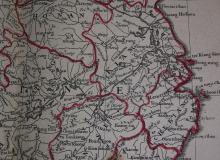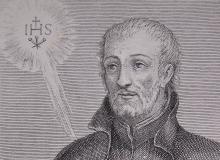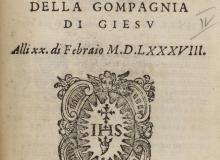Aims of the site
The aim of this website is to address the needs of two broad groups of people: general readers and scholars who wish to access these books online. We’re mindful that not everyone can visit the Burns Library at Boston College and hold these works in their hands – although everyone is very welcome and, if you do visit, you will indeed be able to hold these works yourself – so we see the primary goal as making these works accessible to a national and international readership. To this end, we have provided two digitized versions of each work.
Book Readers

Clicking the "Explore Book" will take you to a version of the book in HathiTrust that has images with optical character recognition (OCR). If you wish to search the text for a particular phrase or word, then the OCR capacity makes this possible.
Searching via OCR
The following caveats need to be kept in mind.
As good as OCR is or can be, in that it enables searching of large quantities of full-text data, it is not perfect. It can be made more so with copious amounts of money but until that rich benefactor steps forward, the OCR capacity here still has some drawbacks, because it has been left ‘raw’. That is, the searchable text on each image has not been manually reviewed or corrected.
To the general reader or even to most scholars this will not be too problematic but to scholars who are interested especially in textual analysis of the works – either for quantitative purposes, or simply to locate every instance of a particular word (be this ‘ginseng’ or ‘Peking’) – there are some recurring challenges.
The accuracy of OCR is affected by the nature of the paper used in the printing process (and how it has aged over time), the size of the print and the font or fonts used (more on this later), the way the text has been laid out and the additions that other readers may have made over time, such as handwritten notes or book-stamps, for instance.
Specifically, in the works on these pages, it is known that where the long “f” has been used where modern typefaces use “s” (so, intereft for interest), and when hyphenation occurs at various places in the word (and especially at places not usually chosen today), searching for such text in the OCR version will not necessarily find every instance of the word. Certainly there will also be other idiosyncrasies but again, given that we believe making these works available in the present form is better than not making them available at all, and mindful of the expenditure already incurred to reach this point in the project, we’re happy with dealing with a few challenges along the way. We’ve moved beyond Ricci, to be sure, but the journey has not yet ended.
Hints
Remember that font changes over time: as for instance “f” for “s”, “vv” for “w” and “v” for “u”.
Remember to search in the language in which the text is written, be that Latin, Portuguese, French, Spanish or English.
Remember that hyphens have been used differently over time and so this may affect your search.
If you’re searching specifically for illustrations, look for the abbreviation “ill.” or “pl.” in the lefthand side bar.



